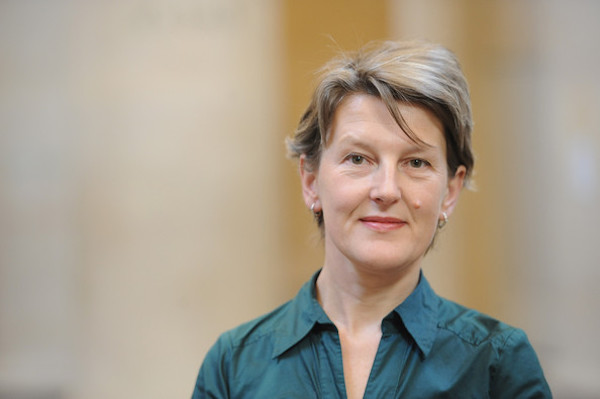Art World
Penelope Curtis Leaves Tate Britain for Calouste Gulbenkian Museum after Highly Criticized 5-Year Tenure
Did she succumb to the pressure?

Photo via: Zimbio
Did she succumb to the pressure?

Lorena Muñoz-Alonso

After five difficult years at the helm of Tate Britain, Penelope Curtis has announced that she was leaving London to become the new director of the Calouste Gulbenkian Museum in Lisbon.
“I am delighted to be the first international appointment to Director of the Calouste Gulbenkian Museum,” Curtis said in a statement released by the Gulbenkian. “I look forward to working in Portugal and working with a strong institution which is looking for change.”
Curtis was also the first woman to become director of Tate Britain when she joined the team in 2010, amid severe funding cuts. She had previously directed the Henry Moore Institute in Leeds for 11 years.
Viciously Criticized
During her tenure at Tate, Curtis has had her share of successes: she oversaw a £45 million renovation of the gallery, spearheaded a new, maverick rehang of the permanent collection, and programmed blockbuster exhibitions such as “Late Turner: Painting Set Free” (see Tate’s JMW Turner Blockbuster Dazzles) and “Pre-Raphaelites: Victorian Avant-Garde.”
But she has also been viciously criticized over many of her curatorial decisions. One of her strongest opponents has been the art critic Waldemar Januszczak, who even called for her head last year.
“Curtis has to go. She really does,” he wrote in his blog in April 2014. “I first noticed what an appalling exhibition-maker she was when she co-curated the ‘Modern British Sculpture’ show at the Royal Academy in 2011. It was, quite simply, one of the worst exhibitions I have ever seen. Subsequent shows at Tate Britain have continued the trend.”
A month later, Brian Sewell, another experienced art critic who writes for the Evening Standard, chimed in. “I am compelled by this amateur exhibition to wonder at the drop in intellectual standards at Tate Britain which appears to have happened since the current director, Penelope Curtis, was appointed,” he wrote in the Standard in May 2014, as a conclusion to his review of the exhibition “Ruin Lust.”
Earlier this year, even the Guardian’s usually mild-tempered Adrian Searle deemed the “Sculpture Victorious” exhibition “troubling, and unavoidably grotesque and prurient … I couldn’t wait for it to be over.”
“[Curtis] is scholarly and prim but also quite quirky and maverick,” an undisclosed art insider told the Independent. “However, she’s rather lacking in the popular touch, as a curator and with people. I like her but this was not always a happy appointment.”
Curtis has had supporters too (including the artists Phyllida Barlow and Richard Deacon) and held her head high during the deluge of scathing remarks. But it seems that she has finally given in to the mounting pressure.
The First International Director to Lead Lisbon’s Gulbenkian Museum
“Over the last five years Penelope Curtis has led Tate Britain with a clarity of vision that has resulted in the successful redevelopment of the gallery and a highly acclaimed rehang of the collection,” Nicholas Serota, director of Tate, said of Curtis’s departure on a statement sent to artnet News. “We shall miss Penelope but we are delighted that a distinguished British scholar is the first international Director to lead and develop this prestigious museum.”
At the Gulbenkian, she will be in charge of a collection of around 6,000 artworks, from Egyptian to early 20th century art, as well as a program of temporary exhibitions. The Gulbenkian has been elected one of the ten best small museums in the world, and was visited by over 273,000 people in 2014.